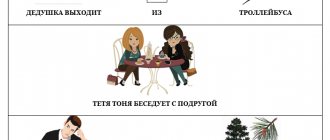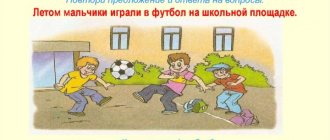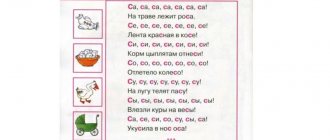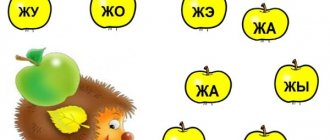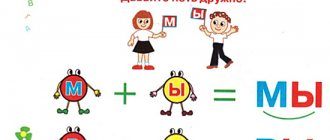On October 25, 2022, draft amendments to EAEU TR 037/2016 “On restricting the use of hazardous substances in electrical and radio electronics products” were posted on the official website of the EAEU.
Public discussion of the project is scheduled for the period from November 19, 2021 to January 21, 2022.
The purpose of adopting the amendments is to clarify and specify certain provisions of the regulations in terms of expanding its scope of application regarding measuring instruments, chemical current sources and a generally open scope of application, indicating exceptions.
The new edition of the regulations will update the requirements for the controlled range of hazardous substances and limiting their content in electrical and radio electronics products: 10 instead of 6.
Also an important addition will be the inclusion of requirements for the disposal of products that have lost their consumer properties due to physical wear and tear or obsolescence, prepared on the basis of European Directive 012/19/EU (WEEE-2).
Clarification of the scope of application of TR EAEU 037/2016
The prepared draft amendments set out in more detail exceptions from the scope of application of the regulations (clause 3, section I). For example, this applies to photovoltaic panels (solar batteries) that are part of electrical and radio electronics products. It is clarified that the regulation does not apply to products intended for systems that are designed, assembled and installed by specialists for permanent use in a specific location for the purpose of producing energy from sunlight for government, commercial, industrial and residential energy consumers.
Important! It is planned to add a clarification that the regulation will not apply to used electrical and radio electronics products only in terms of the requirements of its appendices No. 2 (list of hazardous substances, the content of which in electrical and radio electronics products exceeds the permissible concentration in homogeneous (homogeneous) materials) and No. 3 (special requirements for limiting the use of hazardous substances in electrical and radio electronics products).
The draft also provides for additions to the list of products that are not subject to the regulation:
- large stationary production equipment*;
- large stationary mounted installations*;
- spare and/or components of an electrical and radio electronics product included in the list provided for in Appendix No. 1, in the presence of a document confirming the compliance of the finished product with the requirements of the regulations.
Note: * – the draft amendments immediately provide definitions of new concepts being introduced that are added to existing terms, and the new Appendix No. 6 to the regulations provides a list of them.
In the new edition, it is planned to present the list of technical regulation objects of TR EAE 037/2016 from Appendix No. 1. Thus, the clarification on the household purpose of electrical apparatus and devices according to clause 1 is excluded; a new clause 13 is added, which includes other products, as well as components and components for the products specified in the list.
Certification according to technical regulations
Having dealt with the choice of technical regulations of the Customs Union, the validity of documents confirming compliance and the search for exact requirements, you can proceed to the decisive step - contacting a certification center. Responsible Specialists will talk about the procedure in general and its features, organize tests in laboratories and issue certificates. It is important that the list of CU TR in the accreditation certificate matches the type of your product.
will help you prepare documents on favorable terms . Conformity assessment in the Customs Union is carried out according to all rules by experienced experts, and tests are carried out in accredited laboratories. We are waiting for free consultations by phone +375 29 630 52 83. We deliver certificates and declarations in Belarus and other countries of the Customs Union.
Adding requirements for the recycling of electrical and radio electronics products
A large number of new terms enshrined in the draft amendments to TR EAEU 037/2016 relate specifically to the recycling of electrical and radio electronics products. It is planned to add the following concepts to the regulations: “waste of electrical and radioelectronic products (WEE)”, “labeling with a symbol for separate waste collection”, “best available technologies” (applies to the collection, storage, transportation, processing, disposal, neutralization, disposal, disposal of WEE), “recycling of radioactive waste”, “extended responsibility”, “symbol of separate waste collection” and “authorized government body in the field of handling nuclear waste”.
The symbol for separate waste collection introduced by the draft amendments will have to be applied to the product or packaging and indicated in the operational documents attached to it. The image of the sign is given in Appendix No. 5 of the new edition of the regulations:
The sign will have to have a minimum height of 7 mm (a = 3.33 mm).
Operating documents for electrical and radio electronics products must also be supplemented with mandatory instructions:
- do not throw away a product that has lost its consumer properties along with unsorted solid household waste, but collect it separately from other waste;
- about the possible harmful effects on human health and the environment of hazardous substances contained in electrical and radio electronics products;
- about recycling if the product is not used, to prevent damage to the environment.
Regarding the requirements for recycling processes of electrical and radio electronics products, a separate Appendix No. 4 will appear in the regulations.
Compliance with established requirements for product disposal processes will be verified during government supervision.
How to use them
TR CU is a guide for the applicant with descriptions of what he needs to do, in what cases certification or declaration must be carried out, as well as how and where to solve all the tasks. Technical regulations describe the basic requirements for products in terms of their safety and quality, but often these are not all the conditions and parameters. After all, products in the same category may differ significantly in design, content, and degree of contact with humans or the environment. Security requirements depend on this, so you need to adhere to the following scheme:
Despite the fact that the technical regulations provide a lot of information for the applicant, the bulk of the work is carried out by accredited bodies. These certification centers are also guided by schemes, rules and requirements, and in addition to other documents from the conformity assessment system. The main thing in the process is to choose a suitable accredited body with testing laboratories, extensive experience and a positive reputation.
Registration of the Certificate of Conformity of the Customs Union
A slightly different document, the form of which is fixed by law. Its purpose is to confirm the quality of products issued in accordance with the requirements of the Customs Union regulations. Issued by a product certification body based on a test report. Read more >>>
Certified goods are marked with a single sign of product circulation on the market of the member states of the Customs Union (white or black EAC letters on a contrasting black or white background):
There is no need to issue a Declaration of Conformity or a Certificate of Quality:
- To individuals for goods imported exclusively for personal purposes;
- Legal entities or individual entrepreneurs, if the declared goods are not intended for resale in the territory of the Customs Union (this fact must be documented by the customs authority).
What norms are enshrined in the decision of the EEC Board?
This normative act establishes the following:
- Permitting documentation for devices operating under high pressure conditions, which was issued before the entry into force of the EEC Council decision No. 49 of 04/23/2021, will be valid until the expiration date.
- Before the expiration of the specified documents, the manufacture and sale of equipment of this category in the territory of all EAEU states is allowed.
- The circulation of devices operating under excess pressure and manufactured during the validity of the permitting documentation is permitted throughout their service life.
When will TR EAEU 041/2022 come into force?
Expected date of entry into force of EAEU TR 041/2022: June 2, 2021.
UPD. The entry date of EAEU TR 041/2022 has been postponed
This date was set as March 3, 2022, which approved the technical regulations themselves. And the same Decision No. 19 specifies the key condition for the entry into force of the technical regulations. All this is described in paragraphs. 2-4:
2. The Eurasian Economic Commission, together with the governments of the member states of the Eurasian Economic Union, develop and approve the procedure for creating and maintaining a register of chemical substances and mixtures of the Eurasian Economic Union (hereinafter referred to as the Union) and the procedure for notifying new chemical substances, ensuring their entry into force before December 1, 2018 G.
3. To ask the governments of the Union member states to ensure the formation, by March 1, 2022, of national parts of the register of chemical substances and mixtures of the Union.
4. Establish that the technical regulation of the Union “On the safety of chemical products” (EAEU TR 041 / 2017) comes into force on June 2, 2022, subject to compliance with paragraph 2 of this Decision, with the exception of requirements for the formulations of pesticides and related processes their production, storage, transportation (transportation), sale and disposal (processing).
On the one hand, there are no grounds for a transfer on the part of Russia. We have completed the inventory of chemicals a long time ago (from November 11, 2022 to July 31, 2022) and the national one is successfully functioning on the basis of the GISP of the Ministry of Industry and Trade.
On the other hand, the date of entry into force of EAEU TR 041 was approved 4 years ago (in March 2022, we recall), during which time something could have changed. At a minimum, the technical regulations are Eurasian, so all 5 countries, not just Russia, must confirm their readiness.
In any case, we expect specifics on the transition period in the spring of 2022. Subscribe so you don't miss anything.
Requirements of the Technical Regulations of the Customs Union
To date, dozens of technical regulations of the Customs Union have been adopted and approved for a wide variety of goods and services, but they all have common requirements for the quality of goods in circulation in the territory of the Customs Union:
- Safety for the life and health of citizens;
- Environmental Safety;
- Respect for the rights of consumers of goods;
- Energy efficiency and resource saving.
What requirements are established by the Technical Regulations for customs clearance of goods?
The requirements of technical regulations apply not only to new products produced at enterprises of the Customs Union, but also to foreign goods imported into the EAEU countries. All imported goods must meet the criteria of technical regulations. The only difference is that to confirm the quality of some of them you need to obtain a Certificate of Conformity of the Customs Union, and to confirm the quality of others - a Declaration of Conformity with Technical Regulations. You can find out which of these two documents needs to be prepared for a particular product from the technical regulations for this product.
Registration of the Declaration of Conformity of the Customs Union
The declaration of conformity is issued to the applicant - a resident of a country participating in the Customs Union. The document states that the declared goods meet all the requirements of the necessary technical regulations, which are certified by the seal and signature of the applicant. Read more >>>
Conformity assessment according to EAEU TR 041 / 2022
This technical regulation is notable for the fact that the only form of confirmation of compliance under it is state registration of products.
Moreover, in contrast to the “classical” state registration (which, for example, some types of food and children’s products, cosmetics are subject to), only EAEU TR 041 has two “subtypes” of it:
- notification state registration;
- permissive state registration.
Both are carried out by a state-authorized body (who exactly this will be in the Russian Federation has not yet been determined). The type of state registration depends on whether the substances used in the products are already on the list of chemical substances of the Union or not. Actually, this list is a key element of the entire technical regulation.
If the substances are on the list, then it is necessary to undergo notification state registration; technical regulations allow it to be carried out even in electronic form.
If they are not there, then the substances are considered new, and products based on them will have to undergo a permitting state registration procedure, and the chemical substances themselves will have to undergo a notification procedure (essentially, entry into the register).
The only nuance is that the notification of new chemical substances will be very labor-intensive for the applicant, because it already implies carrying out safety tests (which ones exactly - again, there are no specifics yet).
